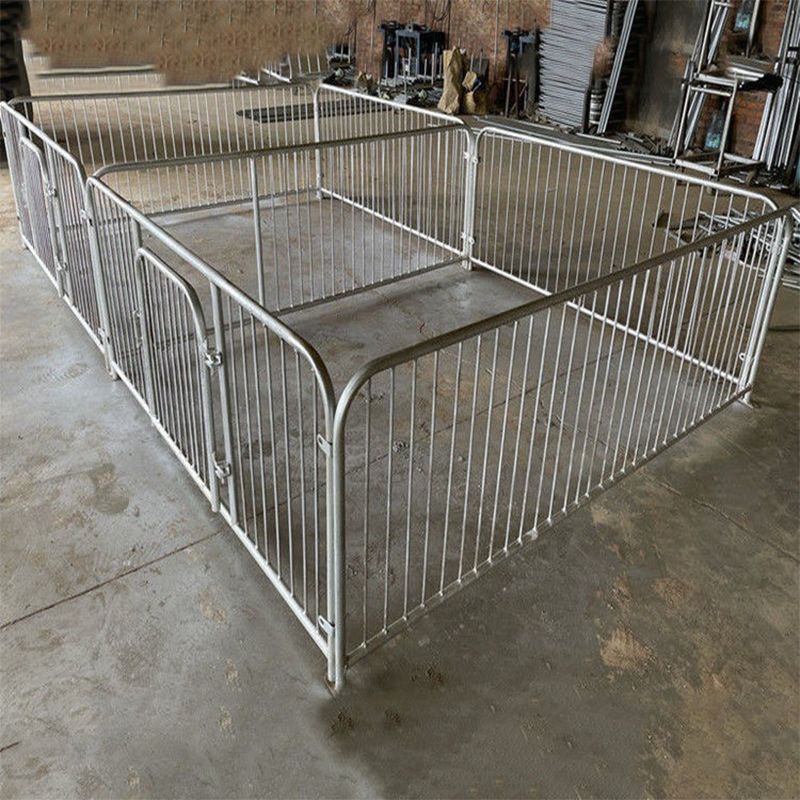Innovative Housing Solutions for Enhanced Egg Production in Layer Chickens
Dec . 11, 2024 10:08 Back to list
Innovative Housing Solutions for Enhanced Egg Production in Layer Chickens
The Importance of Cages for Chicken Layers
In the world of poultry farming, especially when it comes to egg production, the housing system for chicken layers plays a pivotal role in ensuring efficiency, health, and overall productivity. Cages for chicken layers have been a prominent topic of discussion among farmers, animal welfare advocates, and consumers alike. Understanding the purpose, benefits, and challenges associated with these cages can help everyone make informed decisions about egg production practices.
What Are Cages for Chicken Layers?
Cages for chicken layers, commonly known as battery cages or conventional cages, refer to enclosed systems designed to house hens for egg production. These cages are typically grouped together in large poultry houses, and each cage houses several hens. The design is intended to maximize space efficiency, facilitate easy feeding and egg collection, and reduce the risk of disease transmission among birds.
Benefits of Caged Systems
1. Space Efficiency One of the primary advantages of using cages for chicken layers is the efficient use of space. By housing multiple hens in a compact area, farmers can produce a significant quantity of eggs while minimizing the physical footprint of their operation. This is particularly beneficial in regions where land is limited.
2. Health and Welfare When properly managed, caged systems can lead to better overall health for the hens. The controlled environment protects the birds from extreme weather, predators, and certain diseases. Moreover, the regularity of feeding and watering in cages promotes optimal growth and production rates.
3. Egg Quality and Consistency Chickens in cages tend to produce higher-quality eggs on a more consistent basis compared to their free-range counterparts. The controlled environments in cages contribute to uniform egg sizes, shell quality, and overall freshness, which are crucial factors for consumer satisfaction.
4. Labor Efficiency Caged systems streamline the egg collection process. Farmers can quickly gather eggs from cages, reducing labor costs and minimizing the amount of time spent tending to the birds. Automated systems can further enhance the efficiency of feeding, watering, and egg collection.
cages for chicken layers

Challenges and Controversies
Despite the benefits, caged systems for chicken layers face significant criticism, particularly from animal welfare advocates. Concerns revolve around the quality of life for hens housed in cages. Critics argue that these systems confine birds in limited space, restricting their natural behaviors such as nesting, foraging, and social interaction.
Due to these ethical concerns, some regions have begun to implement stricter regulations on the use of battery cages. For instance, the European Union has mandated phasing out conventional battery cages in favor of enriched cages or alternative systems that allow for greater freedom of movement.
Another challenge associated with caged systems is the public perception of egg production practices. As consumers become more aware of animal welfare issues, there is a growing demand for cage-free, free-range, or organic eggs. Farmers are responding by transitioning to alternative housing systems, which can often involve higher production costs and adjustments in farming practices.
The Future of Chicken Layer Housing
As the poultry industry adapts to changing consumer preferences and regulatory environments, the future of caged systems will likely involve a combination of traditional practices and innovative approaches. Enriched cages, which provide additional space and features such as nesting boxes and perches, are becoming increasingly popular. These systems aim to address some welfare concerns while still reaping the benefits of cage systems.
Moreover, ongoing research and advancements in animal husbandry practices may lead to new housing solutions that balance productivity, efficiency, and animal welfare. As technologies evolve, farmers may be able to implement systems that not only meet regulatory standards but also satisfy consumer demand for ethically produced eggs.
Conclusion
Cages for chicken layers represent a complex intersection of productivity, animal welfare, and consumer choice. While they offer numerous advantages in terms of efficiency and health management, the ethical considerations and shifting consumer expectations present challenges that the industry must navigate. Whether through enriched cages or alternative systems, the future will likely see a continued evolution in how we house and care for laying hens in our quest for sustainable and responsible egg production.
-
Hot Sale 24 & 18 Door Rabbit Cages - Premium Breeding Solutions
NewsJul.25,2025
-
Automatic Feeding Line System Pan Feeder Nipple Drinker - Anping County Yize Metal Products Co., Ltd.
NewsJul.21,2025
-
Automatic Feeding Line System Pan Feeder Nipple Drinker - Anping County Yize Metal Products Co., Ltd.
NewsJul.21,2025
-
Automatic Feeding Line System - Anping Yize | Precision & Nipple
NewsJul.21,2025
-
Automatic Feeding Line System - Anping Yize | Precision & Nipple
NewsJul.21,2025
-
Automatic Feeding Line System-Anping County Yize Metal Products Co., Ltd.|Efficient Feed Distribution&Customized Animal Farming Solutions
NewsJul.21,2025






